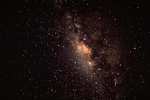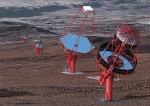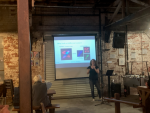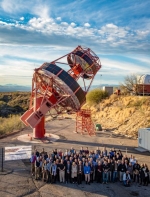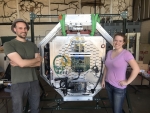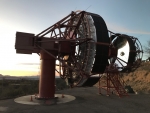The debut of a new detector has many “firsts”: the first assembly, the first shift, the first light, the first detection… But if there’s one thing that makes a debut official—sort of like a detector’s birth certificate—it’s the detailed description of how the detector was built and how it performs.
Graduate student Leslie Taylor helped fine-tune a high-energy gamma-ray telescope this summer. Detecting the Crab Nebula was the "gold standard" for success.
University of Wisconsin–Madison graduate student Leslie Taylor spent four months in Arizona recently. Her research group needed her to lead commissioning and other hands-on work with the prototype Schwarzschild-Couder telescope (pSCT) at the Fred Lawrence Whipple Observatory on Mount Hopkins.
Scientists in the Cherenkov Telescope Array (CTA) consortium have detected gamma rays from the Crab Nebula using the prototype Schwarzschild-Couder Telescope (pSCT), proving the viability of the novel telescope design for use in gamma-ray astrophysics. The announcement was made today by Justin Vandenbroucke, associate professor at the University of Wisconsin–Madison, on behalf of the CTA Consortium at the virtual 236th meeting of the American Astronomical Society (AAS).
Less than a week after its inauguration on January 17, 2019, the prototype Schwarzschild-Couder telescope (pSCT), a telescope design proposed for the Cherenkov Telescope Array (CTA), successfully detected its first Cherenkov light on January 23 at the Fred Lawrence Whipple Observatory in Arizona. A dual-mirrored medium-sized telescope, the SCT is proposed to cover the middle of CTA’s energy range (80 GeV–50 TeV).
A new telescope, part of an international effort to develop and build the world’s largest, most sensitive gamma-ray detector, was unveiled to the public Thursday (Jan. 17, 2019) in a ceremony at the Whipple Observatory on Arizona’s Mount Hopkins.

